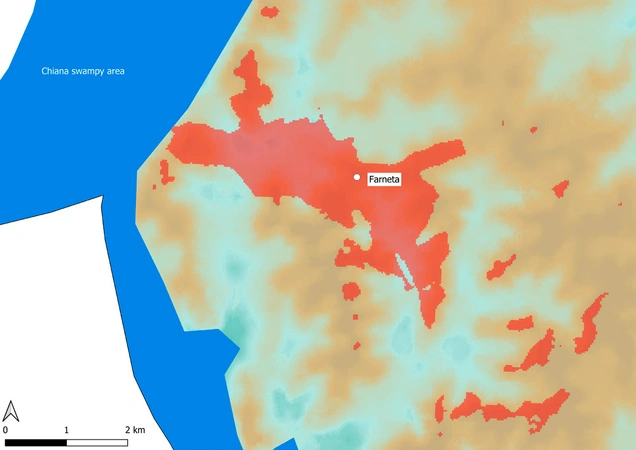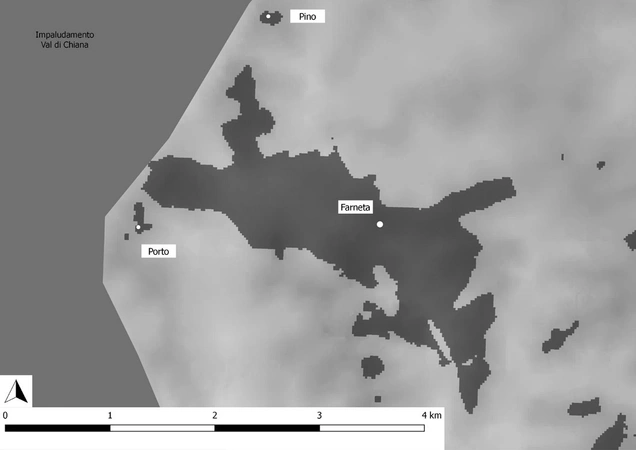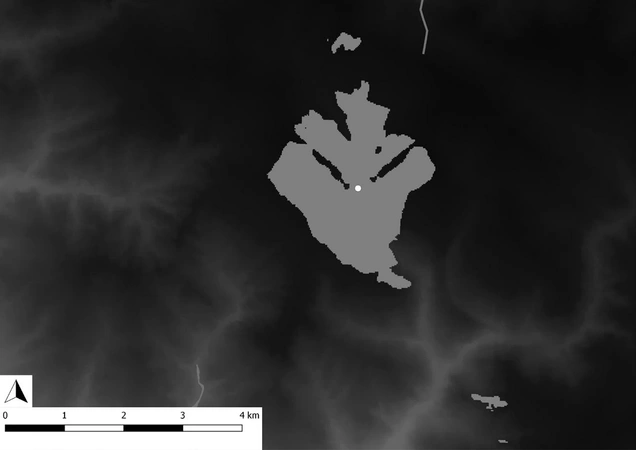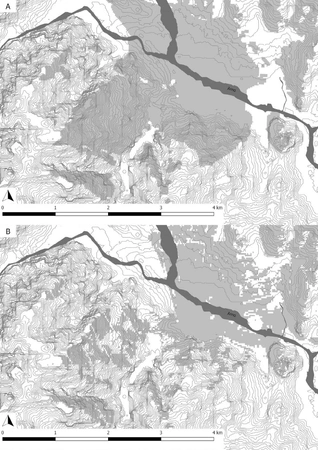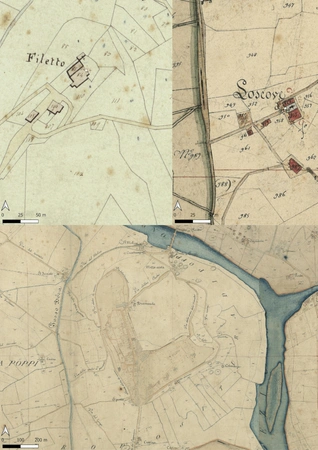Bertoldi S., Castiglia G., Castrorao Barba A., Menghini C. 2022, Soundscape and catchment analysis for a spatial geography of Medieval monastic estates in southeastern Tuscany (11th-12th centuries), «Archeologia e Calcolatori», 33.2, 95-114 (https://doi.org/10.19282/ac.33.2.2022.06)
Copy to clipboard Download: BibTeXSoundscape and catchment analysis for a spatial geography of Medieval monastic estates in southeastern Tuscany (11th-12th centuries)
Stefano Bertoldi, Gabriele Castiglia, Angelo Castrorao Barba, Cristina Menghini
«Archeologia e Calcolatori» 2022, 33.2, 95-114; doi: 10.19282/ac.33.2.2022.06
Abstract
This contribution is the result of experimenting with methodologies linked to the understanding of soundscapes in the context of medieval monasteries. In our specific area, the approach was not focused on the cognitive concept itself so much as the perception of the spirituality of the ringing of bells. The premise was to understand whether, and how, the bells functioned as a soundmark for controlling the territory. The case studies examined are the Abbey of Farneta, the Monastery of Camaldoli and the Abbey of San Fedele, today located in the Province of Arezzo: the three religious structures differ in their historical development, geographical position, and economy. However, what links them (and what links the great majority of medieval monastic complexes) is a tight control of their territory for production purposes, in order to guarantee the profitability of their material heritage. Analyses of the diffusion of the sound of the bells was compared (and integrated) with visibility and catchment analyses. The aim was to understand whether this type of analytical approach could contribute to the definition of a monastery’s ‘catchment area’. The data that emerged describe a complex economic landscape in which identified anomalies at settlement level can be worth analyzing and trying to understand.
Figures
Preview
Subjects:
GIS and cartography Survey and excavations
Download (PDF)Publishers:
CNR - Istituto di Scienze del Patrimonio Culturale
Edizioni All'Insegna del Giglio
This website uses only technical cookies strictly necessary for its proper functioning. It doesn't perform any profiling and doesn't use third party cookies of any kind.
Read our privacy policy for additional information.
By clicking 'OK' or closing this banner you acknowledge having read this information and accept the website's contents.


